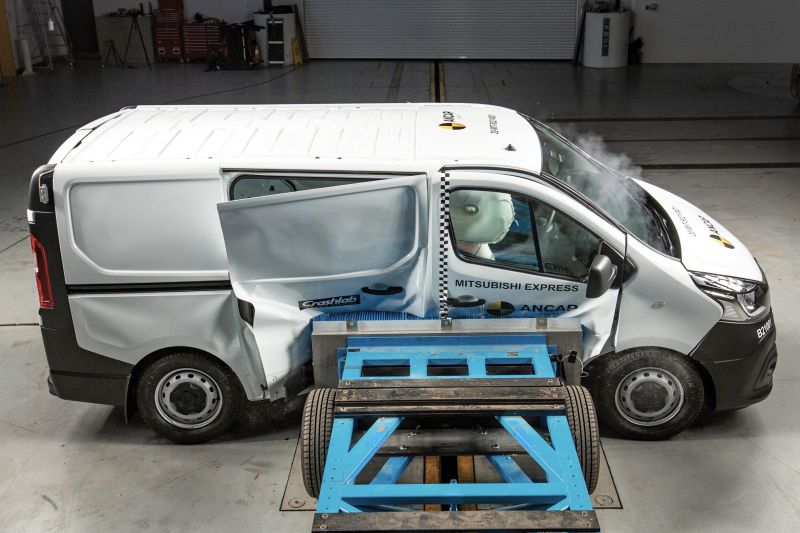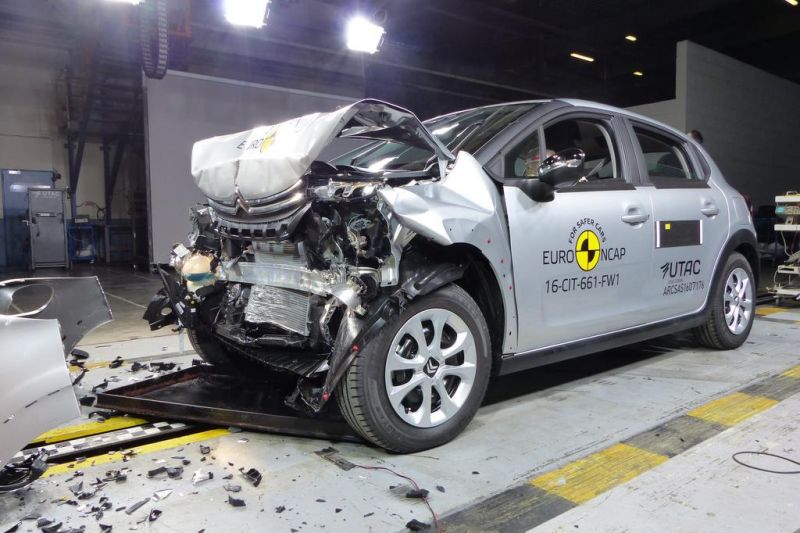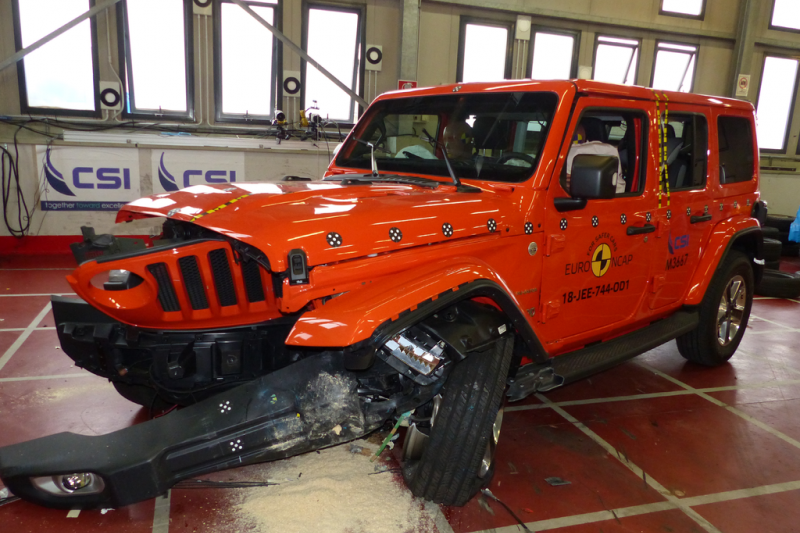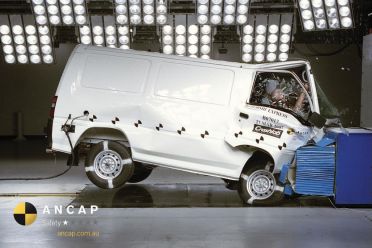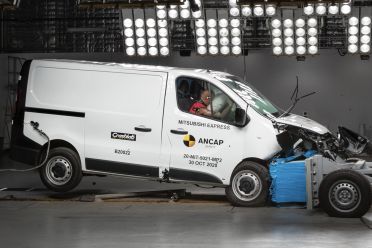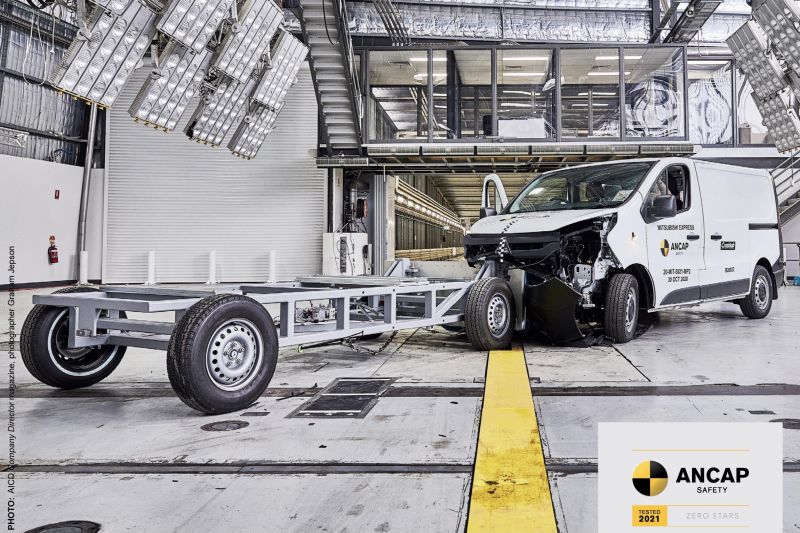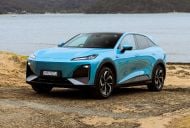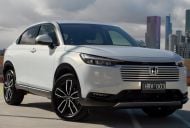Australia has its first zero-star car.
The Mitsubishi Express was this month thrust into the spotlight on the back of a brutal test from ANCAP, which panned the van for its lack of active safety assists.
“Mitsubishi recently introduced the Express into our market, but its specifications do not align with today’s safety expectations,” ANCAP chief executive Carla Hoorweg said of the rating.
“Unfortunately we saw below par performance for protection of occupants and vulnerable road users from the Express, with results lowered even further due to a fundamental lack of active safety systems.”
So the Express is a death trap? Not quite.
ANCAP doesn’t just rate how a car performs when it’s smashed into a barrier, it also judges cars based on the active safety equipment they’re packing.
It’s been a vocal advocate for making autonomous emergency braking (which stops the car if it detects an impending rear-end collision) mandatory, and has gradually expanded the list of active safety assists required to earn a five-star rating.
It has no real power – it can’t mandate features because it isn’t the Federal Government, and doesn’t enforce the design rules actually telling manufacturers what they need to do to sell cars Down Under – but raising the stakes for carmakers chasing the five-star safety rating marketers covet is one way for ANCAP to flex its muscles.
Want to tell the world your car is safe? Fall into line and meet our standards, no matter how arbitrary, or you won’t earn that five-star stamp.
On the one hand, safer cars can only be a good thing. ANCAP pushes carmakers to bring better cars to Australia, and consumers win from that.
One the other hand, it’s getting harder to accurately communicate what actually makes a car safe with a simple zero-to-five rating.
Take the Express. Sure, it didn’t set the world on fire in physical crash testing, but its score of 55 per cent for adult occupant protection was just five per cent short of the result achieved by the Jeep Wrangler.
Despite that, the Wrangler is a three-star car and the Express is a zero-star car.
Digging deeper into the ratings reveals at least a part of the reason. The Express scored 40 per cent for vulnerable road user protection, the Wrangler scored 49 per cent.
That’s at least a part of it. But the main reason is because the Wrangler has autonomous emergency braking and the Express doesn’t.
Yes, the Jeep is safer. It can help drivers avoid a collision where the Mitsubishi can’t.
But based on its ANCAP rating it’s a 60 per cent safer vehicle, and that just isn’t the case.
Diving a bit deeper into the ratings doesn’t exactly clear things up. The Express is based on the Renault Trafic, which has no ANCAP rating… despite earning three stars when it was crash tested in Europe during 2015.
Even more confusing? Express rivals such as the Hyundai iLoad have better ANCAP ratings despite lacking active driver assists because they were tested under different protocols.
Time moves on, and this isn’t about defending Mitsubishi for bringing an old van to Australia without the latest technology.
It’s about ANCAP criticising carmakers for being stuck in the past when it’s stuck there with them.
ANCAP has always been about consumers, but its star rating system just can’t give those consumers the information they need anymore.
Crash safety isn’t as simple as bashing cars into a barrier. There’s more nuance to it in 2021, and that nuance isn’t communicated by a zero-to-five rating.
Journalists who are paid to cover the car industry sometimes find it tough to keep track of what’s changing at ANCAP, so what hope does the average punter have?
How is my grandma, for example, meant to know that the Hyundai iLoad’s four-star rating doesn’t mean it’s safer in a crash than the Express with its zero-star rating?
How is she meant to know the last Express, a properly old-fashioned van that really was a death trap, is exponentially more dangerous than the new one despite wearing a one-star rating?
ANCAP says putting a date stamp on ratings means customers can look up what crash testing entailed when the last Express was crashed in 2007, but it’s hard to imagine most buyers looking beyond the stars.
The solution is simple moving forward. It’s time for separate ratings for physical crash safety and active safety.
A zero-star rating grabs headlines, but it doesn’t tell people what they need to know. Giving the Mitsubishi Express a three-star crash rating and a zero-star active safety rating does.
It tells consumers the car is physically strong, albeit not standout, but it doesn’t have any active safety aids – aids its rivals are starting to feature as standard.
ANCAP does some great work. Its role as an advocate for consumers has helped drive real change in Australia, and spreading the word about safety can only be a good thing.
But slapping the Express with a zero-star rating has highlighted how its ratings aren’t serving new car buyers like they should.

